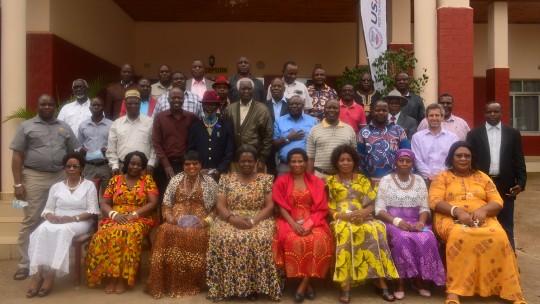Originally published on the International Institute for Environment and Development blog.
Zambian land is governed through statutory and customary systems. Under the statutory system, the Zambian Constitution states that men and women have equal rights under the law, and the 2014 National Gender Policy gives traditional leaders a central role as champions of gender equality in their respective chiefdoms. These rights, however, do not extend to one of the most valuable assets that Zambia has: its land, and in particular customary land, which represents between 60 and 94% of the country’s land. Customary tenure is a form of land ownership that is communal in nature and held under the control of a traditional leader like a chief.
Women’s rights to inherit land, outlined in the Intestate Succession Act, do not apply to customary land in Zambia. This exclusion has profound implications for Zambian women, as customary land accounts for well over half of the country’s land mass. Cultural and traditional practices in many parts of the country further limit women’s access and ownership of land. As custodians of tradition, Zambia’s 288 chiefs have the power and authority to address the barriers that women face in land access, control, and ownership.
To strengthen the role of chiefs in addressing harmful gender norms and practices, promoting women’s rights to land, and increasing women’s participation in natural resource management, the USAID-funded Integrated Land and Resource Governance (ILRG) program has been partnering with chiefs in Zambia at both local and national levels to support and strengthen the role of traditional leaders to champion women’s land rights, bridging legal, policy, and gender norms to ensure sustainable management of land and natural resources. As discussed in this previous blog, the USAID ILRG program implemented a pilot initiative to engage Indunas – local advisors to chiefs – in a year-long dialogue focused on gender norms and women’s land rights.
At national level, USAID ILRG is working with the Zambia House of Chiefs, an institution that provides coordination and operational support to chiefs across the country, to develop a set of guidelines aimed at promoting gender equality and gender-responsive policies related to the management of land and natural resources in individual chiefdoms.
Chiefs champion gender equality in land and natural resources
Recognizing there was a gender equality gap in land and natural resource matters in the chiefdoms, two chiefs advocated for developing The Gender Guidelines for Traditional Leaders in Management of Natural Resources in the Chiefdoms, a tool to operationalize the gender equality mandate stated in the National Gender Policy. In coordination with the Ministry of Chiefs and Traditional Affairs, the Ministry of Gender, and a non-governmental coordinating committee, a sub-committee of the House of Chiefs developed the tool to address knowledge gaps and provide practical guidance on promoting gender equality in the chiefdoms in the areas of land, forestry, wildlife, water, fisheries, and minerals.
It includes guidance on strengthening chiefdom policies and governance approaches, as well as addressing discriminatory gender norms and gender-based violence that hinder women’s participation and benefit sharing from land and natural resources.
Leading the charge to advance gender equality
“We know the problem, we see it every day, we understand the need and we did this to get to the solution. It’s our solution summarized on paper.” – Chief Kaputa
The Gender Guidelines helped chiefs recognize the value of ensuring gender equality in the management of land and natural resources in their chiefdoms. Chief Kaputa, who chaired the subcommittee responsible for the guidelines, explained, “We are not utilizing the potential of women in our chiefdoms, we want to do so but [cannot] unless we know how. That’s why our idea was to have the guidelines as a training tool for chiefs that teaches them how to get women [actively involved] in the development agenda.”
Developing the guidelines was a locally-driven initiative, which directly led to its success. Traditional leaders designed this initiative to address an issue that they had identified as undermining the development of their chiefdoms. Through their leadership and direct engagement, the initiative addressed the specific needs of their chiefdoms and leveraged existing relationships with key stakeholders.
Expected to officially launch in the coming months, the guidelines will be piloted in two chiefdoms through targeted implementation plans, including a coordinated approach to garner uptake by civil society organizations active in these chiefdoms. This pilot will provide a pathway for Zambia’s 288 chiefs to take concrete action to increase gender equality in the governance of customary land and strengthen women’s land rights.
“For many of the Royal Highnesses, it is difficult to address gender equality in the chiefdoms simply because they don’t know how to engage around the issue. These guidelines will make a huge difference… . The guidelines give us a plan and our role is to lead in its implementation and realize positive change in our chiefdoms.” – Chieftainess Muwezwa
About the author: Zenebech Mesfin is a Gender Assistant on the USAID Integrated Land and Resource Governance (ILRG) program.


